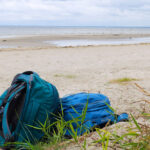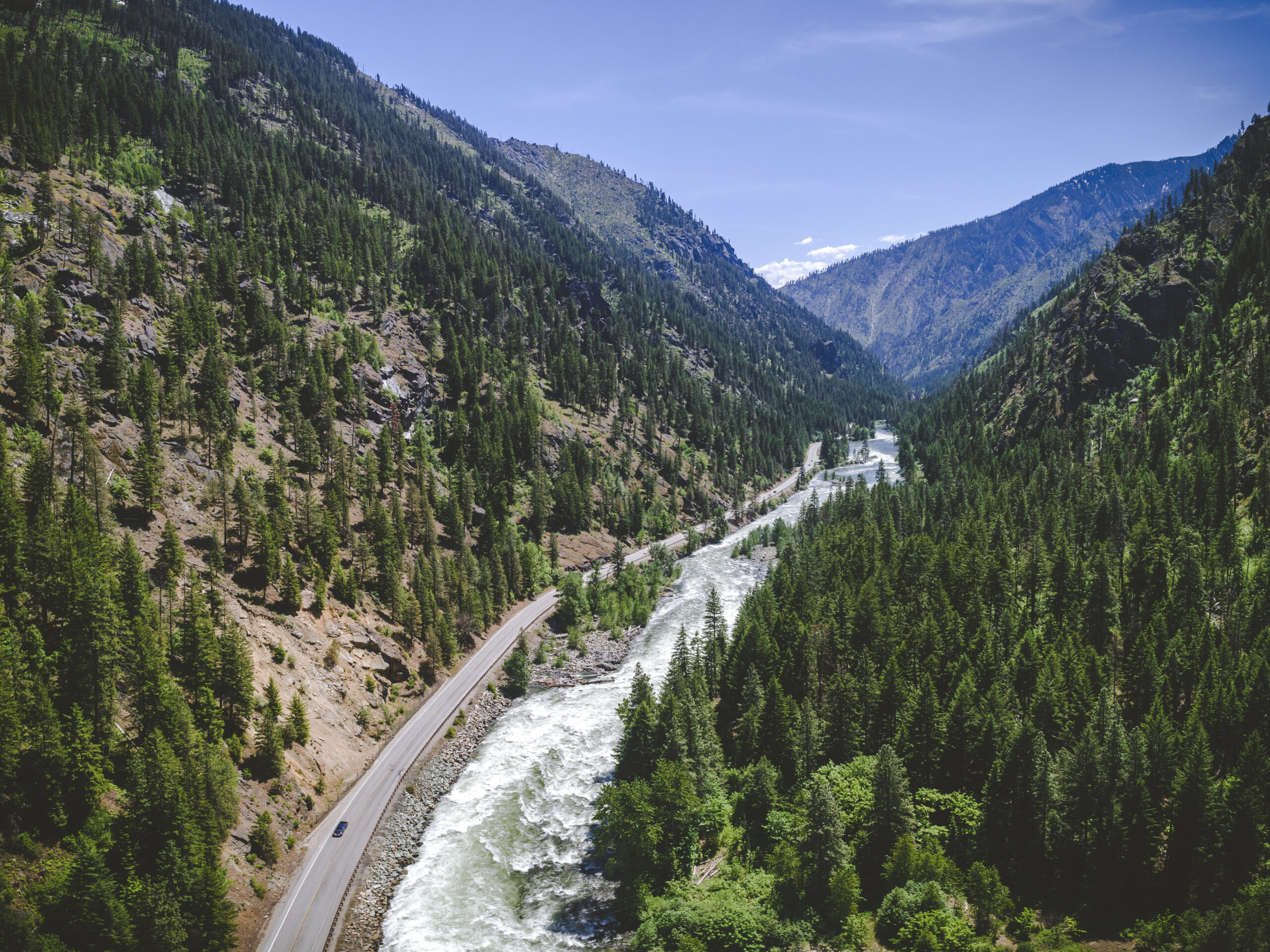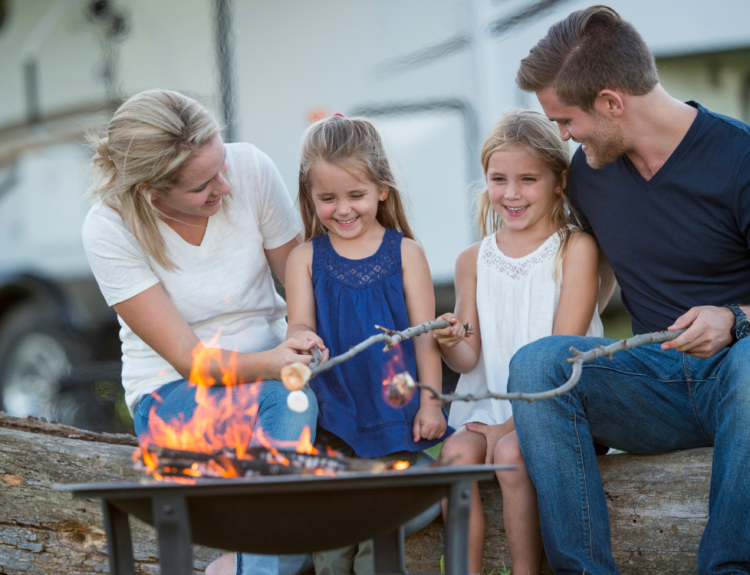Winter camping sounds intense—and for some, downright impossible. People often picture icy tents, relentless cold, and dangerous wildlife. But the truth is, most of what you’ve heard about winter camping just isn’t accurate.
Winter camping myths debunked: that’s what we’re doing here. With the right gear and knowledge, cold-weather adventures can be safe, comfortable, and even magical. Imagine quiet trails, snow-covered scenery, and campsites without crowds or bugs. Sounds better already, right?
Let’s break down the most common myths and show you what winter camping is really all about.
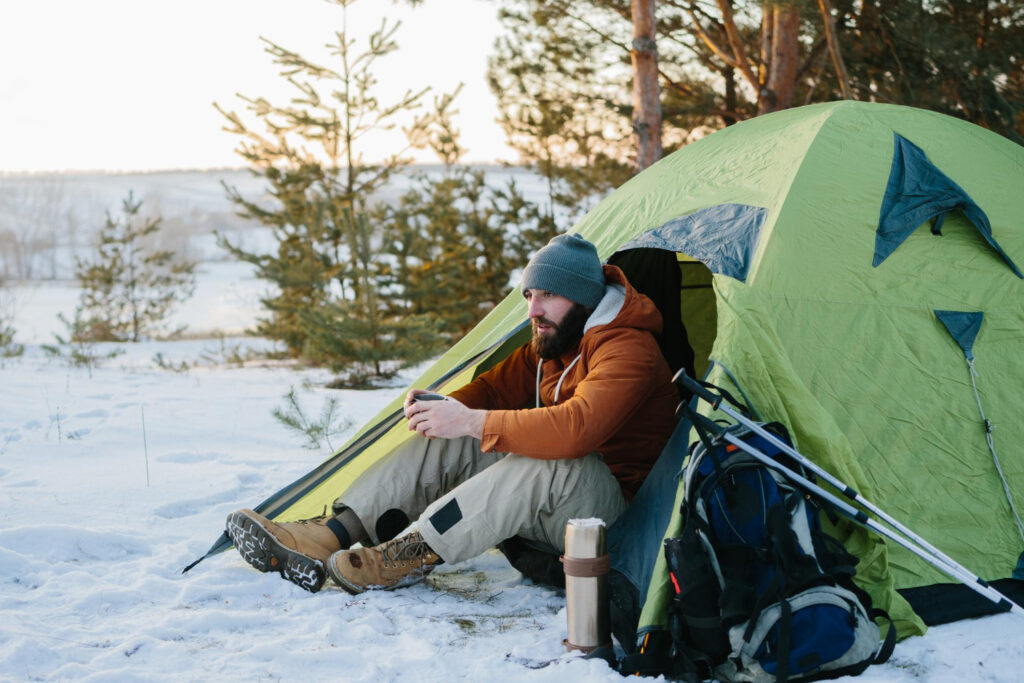
Myth #1 – Winter Camping is Only for Hardcore Survivalists
When people think of winter camping, they often picture extreme survivalists trekking through blizzards, chopping firewood with an axe, and braving subzero temperatures. But the truth is, you don’t need to be a survival expert to enjoy a winter camping trip.
Why Anyone Can Enjoy Winter Camping
Winter camping is more accessible than most people think. Public and private campgrounds in colder regions stay open year-round and often provide winter-specific amenities, including plowed roads, heated restrooms, and designated winter sites. With these conveniences, even first-time campers can comfortably explore the winter wilderness. Snowshoeing, cross-country skiing, and sipping cocoa by a fire ring offer a relaxing alternative to summer crowds and heat.
How Modern Gear Makes It Accessible
Gone are the days when winter camping meant heavy wool blankets and freezing in a canvas tent. Today, four-season tents with reinforced poles and snow flaps hold up to wind and snow. Sleeping bags are rated for subzero temps, and inflatable insulated sleeping pads prevent body heat loss. Base layers made of synthetic or merino wool wick moisture, while battery-powered gear like heated gloves and socks keep extremities warm. Many outfitters rent winter gear, making it easier for newcomers to try the experience before investing.
Now that we’ve busted the myth that winter camping is only for elite adventurers, let’s talk about one of the biggest fears: staying warm while sleeping in a tent.
Myth #2 – Sleeping in a Tent in Winter is Too Cold to Be Safe
Many people assume that sleeping in a tent in winter is like spending the night inside a giant icebox. But the reality is, with proper insulation and layering, you can sleep comfortably—even in below-freezing temperatures.
The Role of Insulation and Layering
Body heat is your primary heat source in a tent. To retain it, wear three layers: a moisture-wicking base (to stay dry), an insulating layer (like fleece or down), and a windproof outer shell. Avoid cotton, which traps moisture and chills your body. Before bed, change into dry clothes—even if your daytime outfit feels dry. Dampness from sweat can cause significant heat loss overnight.
Choosing the Right Sleeping Bag and Sleeping Pad
Sleeping bags should be rated 10°F or more below the lowest nighttime temperature you expect. Look for mummy-style bags for maximum heat retention. Pair your bag with an insulated sleeping pad or use two: a foam pad underneath and an inflatable one on top. The ground draws heat away rapidly, so insulation underneath is just as critical as above. Filling a metal water bottle with boiling water and placing it at your feet in the bag can provide lasting warmth.
Staying warm at night is manageable with the right gear, but what about during the day? Many people think a roaring campfire is the best way to stay warm, but that’s not exactly true.
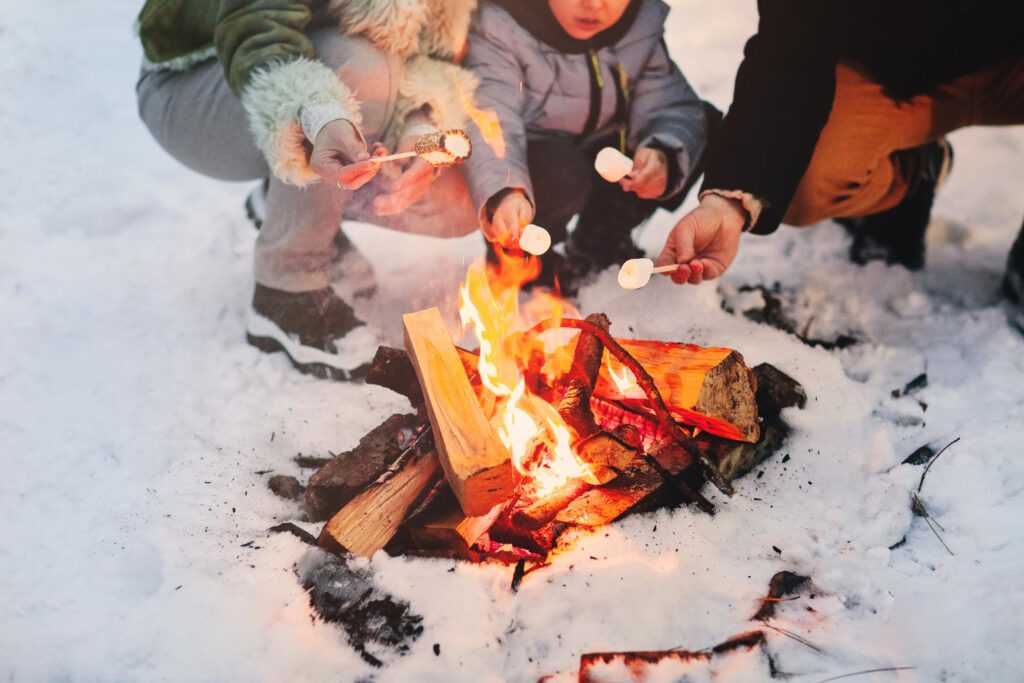
Myth #3 – Campfires Are the Best Way to Stay Warm
Campfires create a cozy atmosphere, but they shouldn’t be your primary heat strategy in winter camping.
Why Body Heat Retention is More Important
Campfires lose heat quickly in open air, especially with wind or snow. Instead, your focus should be on conserving body heat. Staying active throughout the day keeps circulation strong and body temperature up. Avoid sitting for long periods unless insulated. Fuel your body with high-calorie foods to support your metabolism, which helps generate internal heat. Frequent snacking helps maintain this effect.
Proper Clothing vs. Relying on Fire
Layering with performance fabrics does a much better job than campfires at keeping you warm. Choose insulated outerwear with water-resistant shells to block wind and moisture. Down and synthetic insulation trap body heat efficiently. Gloves, thermal socks, neck gaiters, and insulated boots are critical for preventing heat loss in extremities. Fires are best reserved for cooking and ambiance, not core heat retention.
Speaking of common fears, let’s tackle another big one—wildlife encounters in winter.
Myth #4 – Wildlife is More Dangerous in Winter
Some campers fear winter brings higher chances of wildlife encounters, but this myth stems from misunderstanding animal behavior.
Understanding Animal Behavior in Cold Weather
Most large predators, including bears, hibernate or significantly reduce activity in colder months. Species like coyotes, bobcats, and foxes may still be around, but their focus is on conserving energy and finding scarce food—not human interaction. Animals are more likely to avoid campsites than approach them, especially if you store food properly and keep a clean site.
Precautions for Food Storage and Encounters
Even in winter, proper food storage is critical. Use bear-proof containers, or store food in odor-proof bags hung from a tree, at least 100 feet from your tent. Never store food or scented items in your sleeping area. Wash dishes and dispose of waste far from your campsite. These precautions greatly reduce any risk of wildlife conflict.
While wildlife isn’t as much of a concern as people think, many campers also worry about access to food and water. Let’s talk about that next.
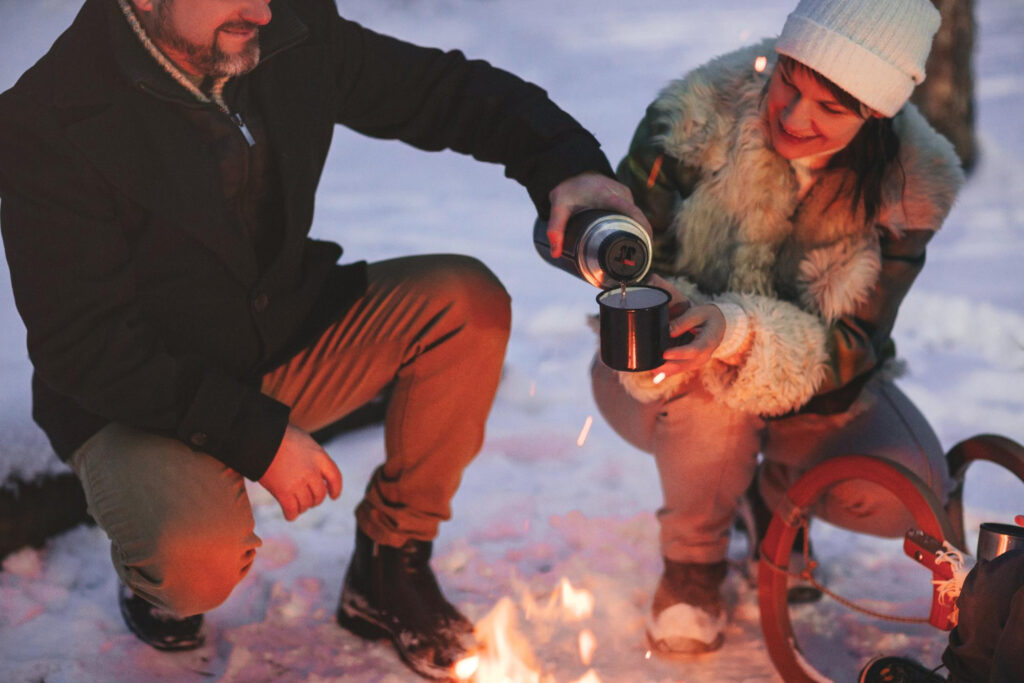
Myth #5 – You Can’t Find Enough Food or Water in Winter
Some campers assume that winter camping means hauling in gallons of water and extra food, but it’s actually easier than you might think to stay hydrated and well-fed.
Melting Snow for Drinking Water Safely
Snow is a plentiful water source, but it must be melted and purified. Never eat snow directly—it lowers your core temperature and can lead to hypothermia. Instead, melt snow slowly over a stove or fire. Once melted, boil the water for at least 1 minute or use a water filter designed for winter conditions. Snow from untouched areas is best, as it’s less likely to be contaminated.
Packing the Right Nutrient-Dense Food
Cold weather increases calorie demands. Plan meals high in fat and complex carbs: freeze-dried meals, pasta, oatmeal, nut butters, trail mix, and jerky are excellent. Instant soups and hot drinks offer warmth and hydration. Prepare snacks you can eat without removing gloves, and keep a stash of easy-access food in your sleeping area to eat before bed—it helps keep you warmer through the night.
Many campers think winter camping is all about survival, but the truth is, it can be an incredibly enjoyable experience.
Myth #6 – Winter Camping is Always Miserable
This final myth keeps many people from trying winter camping—but it couldn’t be more wrong.
The Benefits of Solitude and Scenic Views
Winter transforms landscapes into quiet, snowy wonderlands. Without crowds, trails and campsites feel more peaceful and pristine. Wildlife sightings become more special. Snow dampens sound, making even busy parks feel serene. Sunrises and sunsets over snow-covered hills, plus stargazing in crisp night air, create unforgettable moments.
Tips for an Enjoyable and Comfortable Experience
Preparation is key. Choose a campsite suited to your skill level and accessible during winter. Dress in layers and bring extras. Pack hot meals and snacks. Use insulated containers to keep water from freezing. Set up camp before dark, and know your emergency plans. With a little effort, winter camping can feel more like a cozy escape than a harsh survival challenge.

Winter Camping Myths Debunked: It’s Time to Give It a Try
The idea that winter camping is only for the brave or foolish is outdated. With modern gear, smart planning, and an adventurous mindset, anyone can enjoy the beauty of winter camping. You’ll gain solitude, fresh perspectives, and a deeper connection to nature—without bugs, crowds, or sweltering heat.
RoverPass makes it easy to find and book the perfect winter campsite. Whether you’re looking for a rustic backcountry experience or a campground with winter-specific amenities, RoverPass has a wide selection of options to suit your needs. Browse listings with detailed information about available facilities, read reviews from other campers, and secure your spot with just a few clicks
Frequently Asked Questions
1. Is it dangerous to use a propane heater inside a tent while winter camping?
Yes, it can be. Always use heaters designed for indoor or tent use, such as those with built-in oxygen sensors and automatic shutoff. Ensure proper ventilation to prevent carbon monoxide buildup. Never sleep with the heater on unless it’s rated as safe for enclosed spaces.
2. How do you keep electronics like phones and batteries from dying in cold temperatures?
Cold temps drain batteries fast. Store electronics in inside jacket pockets or sleeping bags to keep them warm. Carry power banks and consider insulated cases for phones. Turn devices off when not in use to conserve battery.
3. Can you still get sunburned while winter camping, even in freezing temperatures?
Absolutely. Snow reflects UV rays, increasing your exposure. Use broad-spectrum sunscreen on exposed skin and wear UV-protection sunglasses to avoid snow blindness. Reapply sunscreen throughout the day, even when it’s cloudy.
4. How do you keep your water from freezing overnight in extreme cold?
Use insulated bottles or sleeves, and store water bottles upside down (ice forms at the top first). Keep them inside your tent or sleeping bag. You can also use wide-mouth bottles that are easier to unfreeze and fill them with warm water at night.
5. Are there any special safety precautions for driving to a winter campsite?
Yes. Check road conditions and weather forecasts before departure. Carry snow chains, a shovel, traction aids, and an emergency kit with food, water, blankets, and a flashlight. Make sure your vehicle is winter-ready and let someone know your travel plans.



